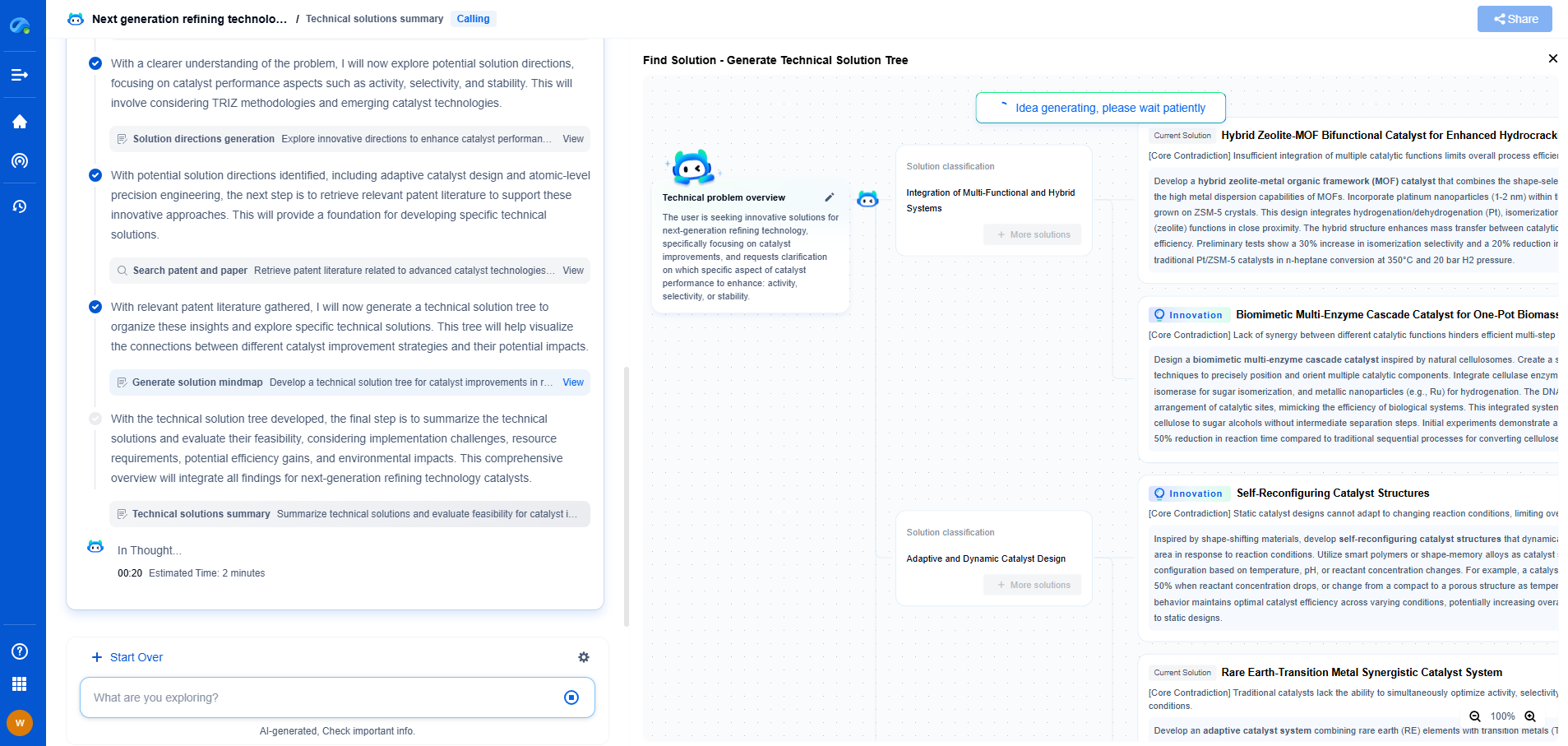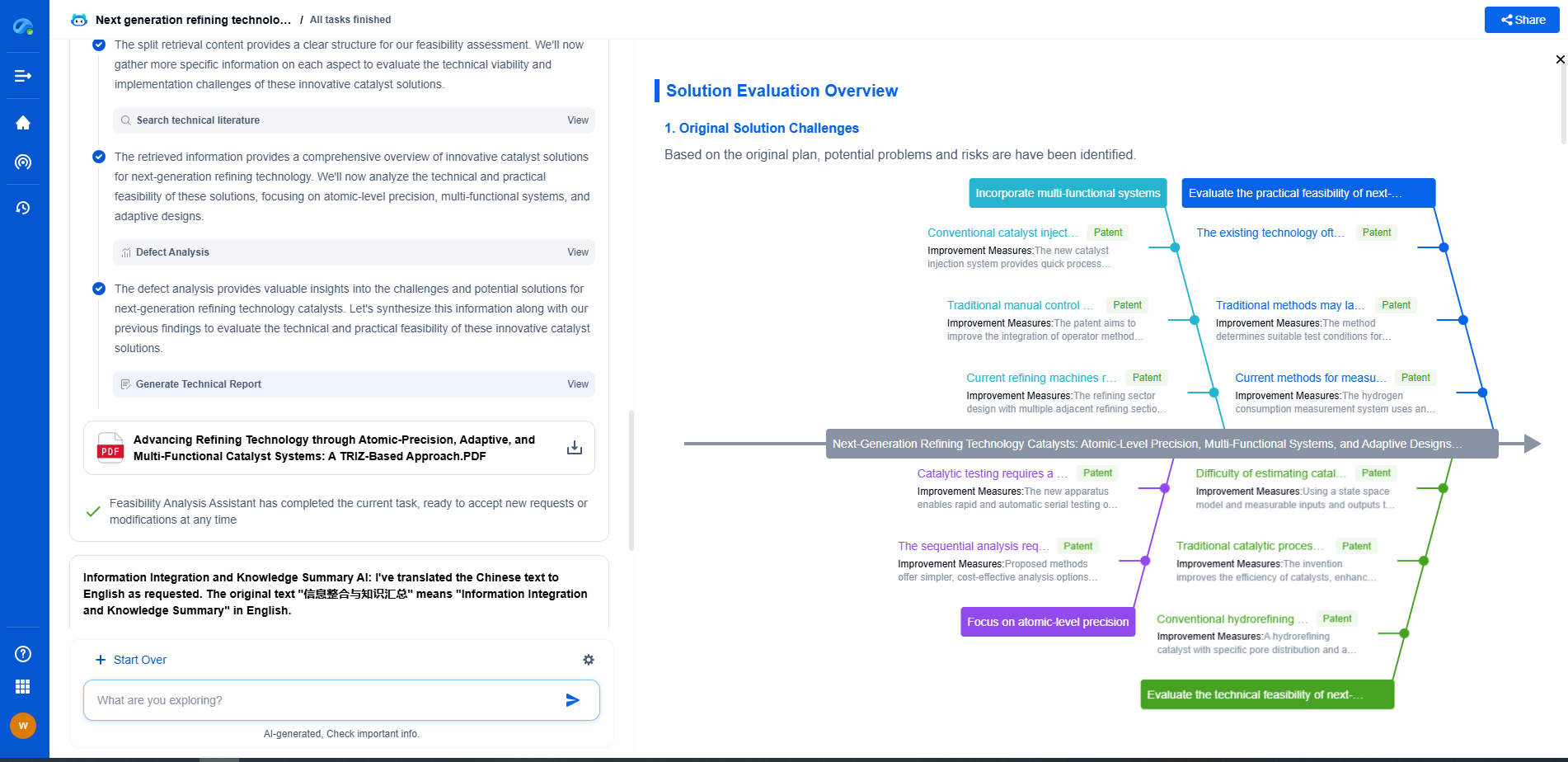Future fuels: What is next after renewable diesel and SAF?
JUN 19, 2025 |
As the world continues to grapple with the demands of energy security and environmental sustainability, the evolution of fuel technology remains at the forefront of both scientific innovation and public policy. Renewable diesel and Sustainable Aviation Fuel (SAF) have already started to transform the transportation industry by providing more sustainable alternatives to conventional fossil fuels. But what lies beyond these advancements? This blog explores the emerging fuels poised to make significant impacts in the coming decades.
**Understanding Renewable Diesel and SAF**
Before delving into future fuels, it's crucial to understand the role and limitations of renewable diesel and SAF. Unlike traditional biodiesel, renewable diesel is chemically similar to petroleum diesel and can be used in existing engines without modification. It's derived from renewable resources, such as vegetable oils and animal fats, and significantly reduces greenhouse gas emissions. Similarly, SAF offers an eco-friendlier option for the aviation industry, reducing its carbon footprint by using feedstocks like waste oils and agricultural residues.
Despite their advantages, both renewable diesel and SAF face challenges, including feedstock availability and production costs, which have curbed their worldwide adoption. This necessitates the exploration of new fuel technologies that could potentially overcome these barriers.
**Hydrogen: The Clean Energy Vector**
Hydrogen is often hailed as the fuel of the future, with its potential to decarbonize sectors that are difficult to electrify, such as heavy-duty transport and industry. When produced using renewable energy sources, hydrogen fuel emits only water vapor when consumed in a fuel cell. The versatility of hydrogen, which can be used in fuel cells or combusted directly for heat, makes it an attractive candidate for replacing fossil fuels.
However, the development of a "hydrogen economy" is contingent upon overcoming significant hurdles, including the establishment of infrastructure for production, storage, and distribution, as well as reducing the costs associated with green hydrogen production.
**Biofuels from Algae**
Algal biofuels represent another promising area of research. Algae grow faster than traditional biofuel crops and can be cultivated on non-arable land, reducing competition with food production. They also have high oil content, making them ideal for conversion into biodiesel and other biofuels.
While the potential is immense, transitioning algal biofuels from the lab to large-scale production involves challenges related to cost, water usage, and efficient harvesting processes. Advances in biotechnology and genetic engineering may hold the key to mitigating these issues, making algal biofuels a viable option in the future energy landscape.
**Electric Fuels and E-Fuels**
Electric fuels, or e-fuels, are synthetic fuels produced by using renewable electricity to combine hydrogen and carbon dioxide. They are considered carbon-neutral because the CO2 emitted when they are burned is offset by the CO2 used in their production. E-fuels can be used in existing internal combustion engines and infrastructure, offering a transitional solution as the world moves away from fossil fuels.
The main obstacles for e-fuels lie in their high production costs and energy requirements. However, as renewable energy becomes more widespread and affordable, the feasibility of producing e-fuels on a large scale improves.
**The Role of Policy and Investment**
The transition to future fuels is not solely a technological challenge but also a matter of policy and investment. Governments and industries need to work collaboratively to create supportive regulatory frameworks and invest in research and infrastructure. Subsidies, tax incentives, and mandates for cleaner fuels can accelerate the adoption of new technologies, while international cooperation can facilitate the sharing of knowledge and resources.
**Conclusion**
The quest for future fuels is a dynamic intersection of technology, policy, and economic considerations. While renewable diesel and SAF have paved the way for more sustainable fuel alternatives, the exploration of hydrogen, algal biofuels, and e-fuels represents the next frontier in the journey toward a cleaner energy future. As these technologies advance, they hold the promise of significantly reducing our carbon footprint, provided that the global community remains committed to innovation and collaboration.
Discover Patsnap Eureka: AI Agents Built for Scientific Innovation
Whether you're designing the next generation of refining technologies or analyzing catalysts and process flows, keeping up with rapidly evolving research and IP data in petroleum processing is no easy task.
Patsnap Eureka, our intelligent AI assistant built for R&D professionals in high-tech sectors, empowers you with real-time expert-level analysis, technology roadmap exploration, and strategic mapping of core patents—all within a seamless, user-friendly interface.
Ready to accelerate your innovation process and make smarter, faster decisions? Discover Patsnap Eureka today and unlock the full power of confident, AI-driven innovation.
- R&D
- Intellectual Property
- Life Sciences
- Materials
- Tech Scout
- Unparalleled Data Quality
- Higher Quality Content
- 60% Fewer Hallucinations
Browse by: Latest US Patents, China's latest patents, Technical Efficacy Thesaurus, Application Domain, Technology Topic, Popular Technical Reports.
© 2025 PatSnap. All rights reserved.Legal|Privacy policy|Modern Slavery Act Transparency Statement|Sitemap|About US| Contact US: help@patsnap.com

